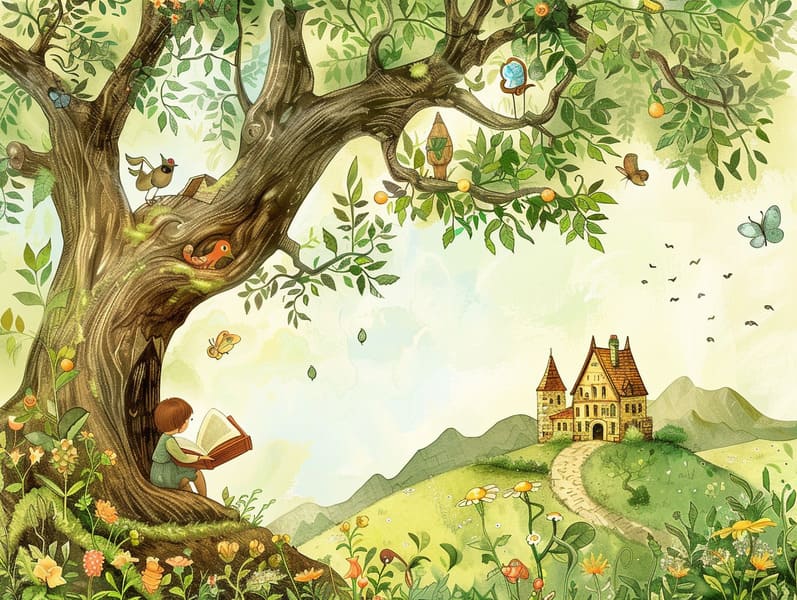Delving into the Background of Legendary Fairy Tales and Their Steadfast Attraction.
Delving into the Background of Legendary Fairy Tales and Their Steadfast Attraction.
Blog Article

Classic fairy tales have legendary status. These narratives have been conveyed from one generation to the next well before they were ever published. They arose from a variety of societies, including Western traditions. They were initially conveyed among adults, often carrying themes and messages concerning the societal norms and beliefs of the time.
The famous Grimm duo, Jacob and Wilhelm Grimm, were among the first to compile and publish many of these beloved fairy tales. Their collection, "Grimm's Children's Stories," included tales like "The Story of Cinderella," "The Story of Hansel and Gretel," and "The True Story of Snow White," which have since become classics in the world of traditional fairy tales. Similarly, Hans Andersen's delightful stories, such as "The Mermaid's Tale," and "The Duckling's Story," have stolen hearts worldwide, solidifying their place in the pantheon of classic fairy tales.
Despite their ancient origins, these tales remain as significant as ever, especially as children's bedtime stories. These delightful tales are now available in numerous formats, including vibrantly illustrated books, delightful animations, and digital fairy tales.
Their unwavering allure can be linked to several enchanting factors:
Crucial Morals: Old fairy tales often share important moral lessons. Stories like "The Story of the Boy Who Cried Wolf" teach the merit of honesty, while "The Story of the Tortoise and the Hare" underline the values of steadfastness and unassuming nature. These stories offer young ones clear distinctions between right and wrong, shaping their moral compass in a tender yet meaningful way.
Compassion and Knowledge: Classic fairy tales frequently include individuals facing challenges and struggles, prompting kids to comprehend with their struggles and celebrate their triumphs. For instance, "The Tale of Beauty and the Beast" demonstrates the necessity of looking beyond appearances to comprehend the inner being of a person, fostering insight and awareness.
Cultural Awareness: Many traditional fairy tales are steeped in the cultural contexts from which they developed. Understanding these fairy tales can provide fascinating glimpses into different historical contexts, advancing a sense of world respect and perception.
Creativity and Imagination: The fantasy-filled elements in fairy tales—enchanted lands—enhance children’s visions. These narratives guide readers to mythical realms, enhancing fantastical thinking and a sense of marvel that lasts a lifetime.
Old fairy tales are not only bewitching but also informative. They work as whimsical tools in fostering various cognitive and affective skills in children. When old fairy tales are spoken, they cultivate verbal skills by presenting new terms these guys and meanings and complicated sentence structures. This practice also fosters listening abilities and mindfulness, as kids focus on every detail, excited to see what happens next.
Furthermore, analyzing the themes and characters of timeless fairy tales can improve thinking skills and logical thinking. Young ones are instructed to discover patterns, anticipate outcomes, and figure out cause and effect. These conversations also assist the young reveal their thoughts and feelings, enhancing their emotional intelligence.
In today’s cyber age, the proliferation of online storybooks has made these fairy tales more available than ever. Online platforms and programs provide vast collections of timeless fairy tales that can be accessed or listened on anytime, anywhere. Fairy tales told out loud are particularly popular, supplying an fun way for young ones to be a part of these charming tales. Audio stories and voiced videos take characters and settings to life, often paired with captivating melodies and instrumentals that augment the story adventure.
The enduring charm of ancient fairy tales lies in their ability to adjust to changing times while maintaining their core values. Contemporary modernizations of these narratives often bring in more inclusive protagonists and modern settings, making them relatable to today’s audience. However, the main ideas of valor, understanding, and justice remain unchanged, continuing to connect with young listeners of all ages.
Timeless fairy tales also offer a sense of solace and homeliness. They showcase a organized narrative with a straightforward beginning, middle, and end, often ending with the finalization of conflicts and the triumph of right over wrong. This assuredness can be comforting for young ones, extending a sense of security in an dynamic world.
Ancient fairy tales continue to bewitch and guide new generations, maintaining their splendor and relevance in modern society. As bedtime stories for kids, they allow a perfect blend of magic and knowledge, encouraging moral values, empathy, and creativity. The existence of internet fairy tales and the sought after status of fairy tales spoken ratify that these traditional fairy tales remain attainable to new generations.
By perpetuating and communicating these fairy tales, we continue to recognize the rich tapestry of lore and cultural heritage. Whether you are accessing a colorful picture book, accessing a web collection, or listening via an audiobook, the elegance of famous fairy tales is always within reach. These fairy tales point out of the immortal essence of fairy tales and its ability to bind us across eras and regions.
If you are perusing a vibrantly illustrated book, discovering a internet collection, or listening via an read-aloud story, the beauty of Grimm's fairy tales is always within reach.
These fairy tales reveal of the ageless force of narratives and its ability to gather us across epochs and places, creating a bond that delights and instructs alike.